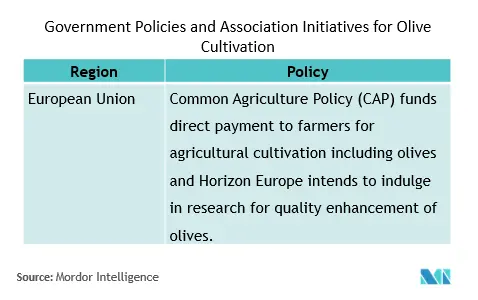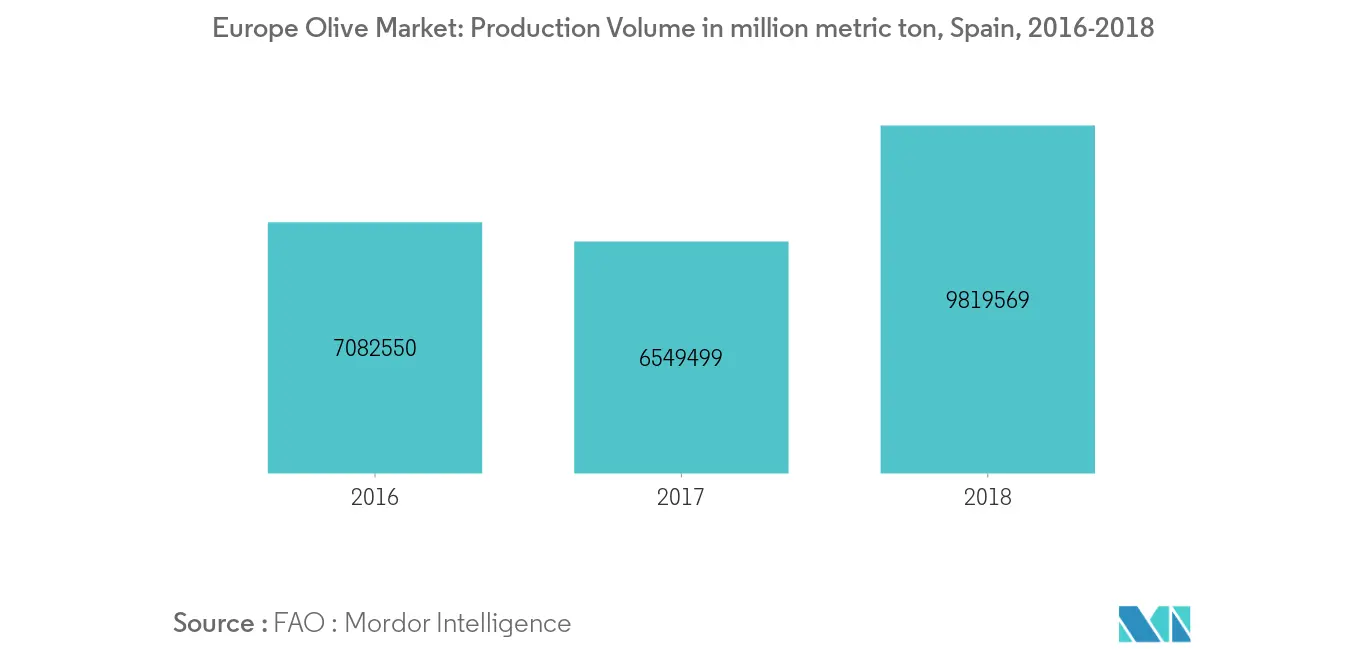Market Trends of Europe Olive Industry
This section covers the major market trends shaping the Europe Olive Market according to our research experts:
Favorable Government Policies and Association Initiatives Promoting Olive Cultivation
The demand for olive, as a commodity, is highly influenced by price-sensitivity amongst the buyers, which is further driven by the fluctuations in climatic and trade conditions in the major producing countries. As such, the respective governments and associations have initiated several support policies and programs, including timely tax rebates and subsidies for olive growers, in order to stabilize the production level by covering variable costs in times of distress.
The Common Agriculture Policy (CAP) has played a pivotal role in the sanction of funds for the sustainable cultivation of agricultural commodities, including olives in the European Union. Out of the total budget allocation for CAP valued at USD 40.07 billion for 2021-2027, a total of USD 29. 12 billion is reserved for direct payment to farmers and an additional value of USD 10.98 would be allocated through the European Union’s Horizon Europe research program to support research and innovation in food and agriculture, including a quality enhancement for olives. Moreover, the European Commission expressed full support for the olive producers in Spain on the pretext of high import tariffs levied by the United States on ripe olives with a view to protecting the Californian olive growers, in 2018. The Greek Ministry of Food and Rural Development further reported that more than 15,000 farmers in the country applied for EU subsidies in 2017, as opposed to 11,400 in 2014 and 8,600 in 2009. Such favorable EU subsidies have resulted in a 15% increase in farmers between the ages 18 and 40 since 2009 in Greece, as reported by the Association for Young farmers.

Spain Dominate the Market
The country produces a wide variety of olives namely, morrut olive, manzanilla cacereña olive, farga olive, manzanilla olive, lechín de sevilla olive, cornicabra olive, picual olive, verdial olive, morisca olive, picudo olive, verdial de badajoz olive, blanqueta olive, hojiblanca olive, verdial de huevar olive, loaime olive, changlot real olive, empeltre olive variety, arbequina olive, etc. As per the US Department of Agriculture database, olives are the second-largest produced crop in Spain after grains. The major olive-producing regions are in Andalucía, Castilla - La Mancha, Extremadura region, Catalonia, Aragón, and Valencia. These regions produced a large share of total olive production in the country every year, during the study period. Olive growers adopt three types of olive farming techniques, namely, traditional, intensive, and super-intensive farming methods. The increasing new technological development is promoting the use of the intensive method of farming, which enhances the olive production level in the country. This trend is expected to impact olive production during the forecast period. In 2018, the Ministry of Agriculture, Fisheries, and Rural Development of the Andalusian provincial government of Spain pledged USD 3.19 million, to distribute among operative groups, which include farmers and agricultural associations, to develop 17 different projects specifically earmarked for olive growers. Thus, the growing demand for olives in the export markets, especially in the international markets, coupled with the rising domestic consumption, is likely to drive the production of olives in the country during the forecast period.


